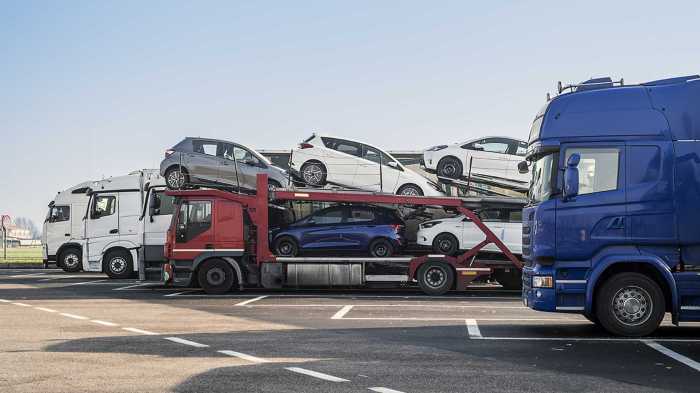Technology and Innovation in Auto Transport

The auto transport industry, once reliant on phone calls, paper documents, and manual scheduling, is undergoing a significant transformation driven by technological advancements. These innovations are streamlining operations, improving efficiency, and enhancing the overall customer experience, leading to a more transparent and reliable service. The integration of technology is not merely improving existing processes; it’s fundamentally reshaping the industry’s landscape.
Impact of Technology on Auto Transport
Technology is impacting the auto transport industry in numerous ways, from optimizing routes and reducing fuel consumption to enhancing communication and providing real-time tracking capabilities. GPS tracking, sophisticated route planning software, and automated dispatch systems are revolutionizing logistical efficiency. Furthermore, the use of big data analytics allows companies to predict demand, optimize pricing strategies, and proactively address potential issues.
This leads to improved customer satisfaction through better service predictability and reduced delays. The implementation of robust communication platforms ensures seamless information flow between carriers, dispatchers, and customers, minimizing misunderstandings and delays.
Innovative Solutions in Tracking, Scheduling, and Communication
Several innovative solutions are being implemented to improve tracking, scheduling, and communication within the auto transport industry. Real-time GPS tracking provides customers with constant updates on their vehicle’s location and estimated time of arrival. This transparency builds trust and reduces anxiety associated with long-distance transport. Advanced scheduling software optimizes routes based on various factors such as traffic, weather conditions, and driver availability, minimizing transit times and fuel costs.
Cloud-based communication platforms enable instant messaging, file sharing, and real-time updates among all stakeholders, facilitating quick problem resolution and efficient collaboration. For example, a company might use a platform that integrates GPS data with a messaging system, allowing immediate notification to the customer if a delay occurs due to unforeseen circumstances, such as severe weather.
Benefits of Online Platforms for Booking and Management
Online platforms are transforming how auto transport services are booked and managed. These platforms offer customers a convenient and user-friendly interface to obtain quotes, compare prices, schedule pickups and deliveries, and track their vehicles in real-time. The ability to access all relevant information in one place eliminates the need for numerous phone calls and emails, saving both time and effort.
For transport companies, online platforms streamline operations by automating many tasks, such as scheduling, dispatching, and invoicing. This increased efficiency allows companies to handle a larger volume of shipments with fewer resources, leading to cost savings and increased profitability. The transparency offered by online platforms builds trust with customers, leading to improved customer satisfaction and loyalty. For instance, a customer can easily access the contract, proof of insurance, and tracking information through a secure online portal.
Future Trends in Auto Transport
The future of auto transport will likely see an increased reliance on automation and artificial intelligence (AI). Autonomous vehicles, while still in their early stages of development for large-scale transport, hold the potential to revolutionize the industry by significantly reducing labor costs and improving efficiency. The integration of blockchain technology could enhance security and transparency by providing an immutable record of all transactions and shipments.
Further advancements in predictive analytics will allow for more accurate forecasting of demand and optimized resource allocation. The use of drones for vehicle inspections and delivery of smaller parts could also become more prevalent. For example, we might see the emergence of automated vehicle loading and unloading systems in strategically located hubs, further streamlining the process and reducing the potential for human error.
Finally, the increasing integration of electric vehicles will require the industry to adapt its infrastructure and practices to accommodate the unique needs of these vehicles.